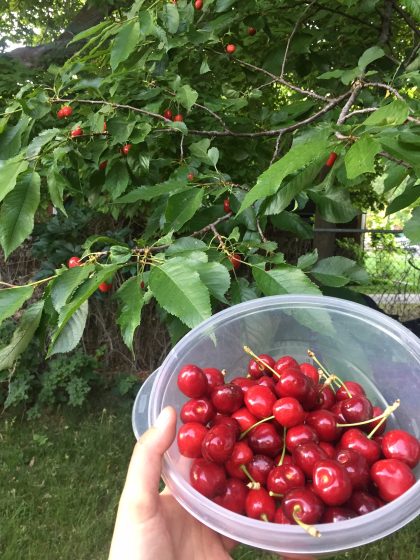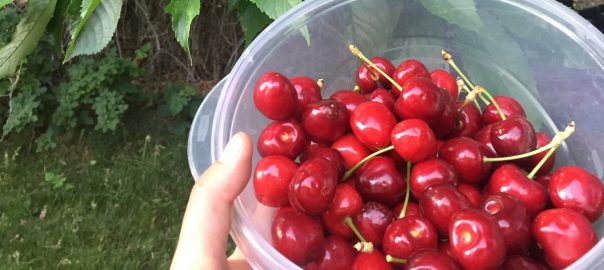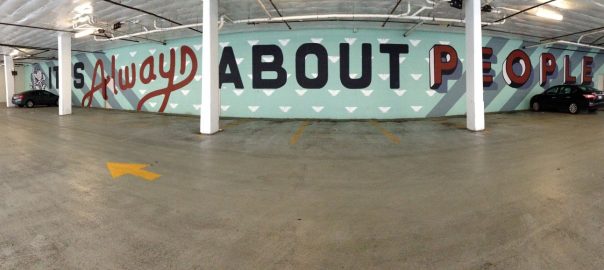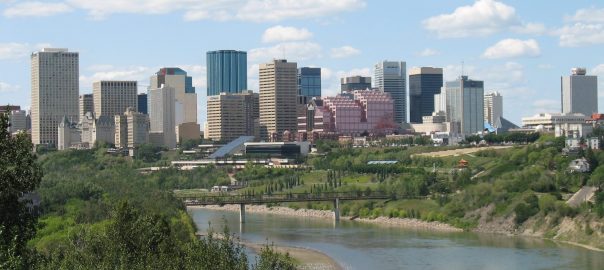Should planners maintain inefficiency so that they have the capacity to be efficient when they need to? When the “low-hanging fruit” conversation comes up: Does picking it actually move us in the right direction?
Anyone who has participated in processes of planning, community development, advocacy and societal change more generally has probably engaged in an inevitable conversation about “low-hanging fruit”. (Perhaps there are similar idioms in languages other than English.) In my experience, it goes like this: there is a broader, inspiring conversation about the ultimate vision and goals that the group wishes to achieve. This is followed by the identification of a series of steps to be taken to achieve that goal, some small, some large, most unattainable in the short term with existing resources. Then, to avoid facing what seems like the futility of it all, the conversation turns to identifying pieces of the plan that are achievable in the near term, with the resources available or easily obtainable. A frequent focus of this conversation is some form of assessment of barriers and opportunities to forward progress. The low-hanging fruit are the actions that can be taken toward the goal that are not blocked by barriers.
Problems with this approach include the assumption that the process of change is a linear one, that one step leads to the next until the final goal is achieved and that therefore low-hanging fruit are the same kind of fruit, and of equivalent quality, as the fruit growing higher up on the metaphorical tree. It also assumes that regardless of whether you ever manage to pick the rest of the fruit, the low-hanging fruit is worth picking, and is better than picking no fruit at all. If fruit picking is the goal, then it makes sense to start with the ones you can reach while someone goes and gets a ladder so you can get the rest a bit later. If, however, the lower fruit is not equivalent to the higher fruit, you might take up all the room you have in your baskets with the lower hanging fruit and never get to the higher fruit at all. Or maybe you conclude that if all you can get is the lower fruit, maybe you should choose another tree altogether, where you stand a better chance of success. (As a side commentary on this particular metaphor, and as someone who lives with fruit trees, I can also say that the fruit on the top of the tree ripens first, as it usually gets more sun, therefore picking the lower fruit first is not a good idea at all.) Over the years, I have spoken with many in the field of planning who feel frustration with the low-hanging fruit approach.

Settling for the low-hanging fruit can actually lead you astray
Recently, I spent several days in a workshop as part of a team working on energy resilience in low-income neighborhoods in the city where I live. The team, when I joined it, appeared to me to be working on a typical low-hanging fruit problem: how to increase participation of low-income households in several programs designed to improve energy efficiency and reduce energy use. Efficiency and conservation are the classic low-hanging fruit of sustainability efforts: energy, water, fuel, recycling, these all fall into the general category of working within the existing system to make it less wasteful of precious resources. It’s hard to disagree with these arguments; I think we all intuitively approve of “efficiency” and disapprove of “waste”. But let’s take a look at what efficiency and waste might really mean within the context of the fruit-picking metaphor.
Ecologists are familiar with the concept of resource limitation in ecosystems. An ecological community of plants, microbes and animals will increase its primary production (the production of biomass) until it runs out of a resource it needs. The main limits on primary production globally tend to be sunlight, temperature, or water, however at local scales many ecosystems are limited by a particular nutrient such as nitrogen. Ecologists can detect resource limitation by experimentally adding more of the limiting resource to the system and seeing if production increases. Complex adaptive systems—such as ecosystems, economies, and cities—self-organize around constraints and limits, although they often respond to them in ways we don’t expect. For example, in the complex system that is a city, fundamental resources such as space and water may act as constraints on growth. Transportation planners can tell you what happens when you remove the constraint of road capacity by building more capacity: rather than just relieving congestion, expanding road capacity results in induced demand—more development that quickly brings the system back to a congested state. A few years ago, a graduate student of mine developed a system dynamics for Las Vegas’ water supply that indicated induced demand occurring with water as well. The city’s population growth plateaued until new water projects (the pipeline from Lake Mead, for example) came online, and explosive growth followed.
Here in Salt Lake City, we receive an average of 400mm of precipitation per year; we have some of the highest per capita levels of water use in the world and one of the fastest population growth rates in the US. The vast majority of our water use in the state goes to agriculture, but outdoor irrigation to maintain green grass and shade trees in yards, parks and gardens is the largest share of urban use. We run our sprinklers freely and pay very low rates for what we use. Many civic-minded residents perceive and abhor this “waste” and are converting their lawns to xeriscape. That is, they are imposing a voluntary constraint on themselves that the broader system does not impose. What does this picking of low-hanging fruit achieve within the broader system, then; in years of normal precipitation, what happens to the water that is not used by these residents? The residents, I presume, think that the water is either staying in the reservoirs (which is probably directly true in the short term), or contributing to maintaining ecological streamflows (which may also be true but only if the reservoirs are full). In the longer term, it may also be helping to postpone the construction of a planned water project on the Bear River to the north, thereby saving us all a lot of money and preventing the habitat destruction associated with a new dam. However, it is also probably fueling more development locally by relieving some of the water supply constraints on our local population growth.
I’ve spoken with regional water policy leaders and managers who recognize—off the record—that the “waste” of water in our agricultural and urban systems is actually serving as our emergency reserve. If a deep, multi-year drought hits, there are a lot of taps we can turn off and still have water for basic uses. This is a manifestation of the “flexibility” described by Gregory Bateson in his 1970 essay1. Bateson describes flexibility as “the uncommitted potentiality for change” (the current buzzword “resilience” is also getting at this). From Bateson’s perspective, the goal of all good planning must be to increase flexibility, despite the fact that the system has a “natural propensity to eat up all available flexibility”. How does the planner create flexibility while restraining the system from hungrily gobbling it up? In other words, how do you maintain inefficiency so that you have the capacity to be efficient when you need to? In the case of our wasteful water use, if we increase efficiency now, in good years, we will grow into our good year water supply levels, and have much less room to tighten our belts later.
So, should ecologically-minded citizens continue to water their thirsty lawns rather than try to cut back? What is the higher fruit we’re really interested in here? I think the vulnerability in the system is that nothing protects ecological “uses” for water such as maintaining natural hydrologic flows, aquatic and riparian habitats, etc. Another piece is that the legal framework for water allocation and management here in Utah is set up to be litigious and confrontational rather than collaborative. So the higher fruit is really a reorganization of our water management structure at state, regional and local levels and until we can manage that, in a way that prevents the hungry system from consuming all the slack, I think there’s a reason to stay on the fence with regard to household yard-watering.
Does this narrative apply to the energy efficiency project? Does helping a low-income household to reduce their energy use through, say, upgrading their appliances or insulating their home somehow promote increased energy use somewhere else in the system? Does it remove a constraint on unsustainable growth in the broader system? Certainly, some parallels between the energy and water cases are clear, primarily the desire to reduce “waste” and to save resources and money. However, energy turns out to be a different situation and the low-hanging fruit is more clearly worth picking, for at least three reasons. First, for households who are struggling, then it is a clear win. Constraints on upward mobility of disadvantaged groups are NOT constraints that we want to maintain. Second, energy supply is not a limiting factor in Salt Lake City currently, or in most cities, unless a legal requirement for renewable sources has been imposed. Because energy isn’t limiting here, the picking of the low-hanging efficiency fruit really isn’t going to hasten or impede our progress toward a more sustainable, renewable energy future. Third, our city electricity supply is generated to meet demand. Energy that isn’t used is energy that isn’t generated, and that means that less fossil fuels are burned, our climate impact is reduced and the air we breathe is cleaner. Using energy more efficiently in this case probably just results in lower resource use and, using less means that we can postpone or avoid expensive investments in electricity generation capacity. The low-hanging fruit of energy efficiency is one of several fruits that will need to be gathered on the path to achieving a resilient, renewable and equitable energy system, and it is therefore worth picking.
One of the fundamental challenges of working in the field of planning, it has always seemed to me, is that planners are good at looking ahead, at perceiving future rough seas, but—to switch metaphors here—they have relatively few levers to pull. How do we plan for game-changers that are coming up fast, like driverless vehicles? Or for changes or catastrophes that we know are likely to hit, but we’re not sure when or how, and that require significant cost to prepare for? As Bateson says, ultimately we need to create a system that has the resilience/flexibility to deal with changes and challenges while still keeping an eye on the further horizon.
This goal is the high fruit, the sun-ripened, juicy-sweet premium fruit. What is the best strategy for choosing actions in the short term, to make sure we don’t run off course, to avoid wasting our efforts? I think we should ask ourselves these questions every time the low-hanging fruit conversation comes up: In picking this fruit, are we altering a constraint on the larger system? Is it a constraint we want to alter? Does picking it actually move us in the right direction, whether or not we ever reach the higher fruit? The answer will vary in different cases, but I propose that thinking about the factors that are limiting the system may help to more effectively target our fruit-picking efforts.
Sarah Jack Hinners
Salt Lake City
1Bateson, G. (1972). Ecology and Flexibility in Urban Civilization, pp 502-513 in Steps to an Ecology of Mind. University of Chicago Press.







Leave a Reply